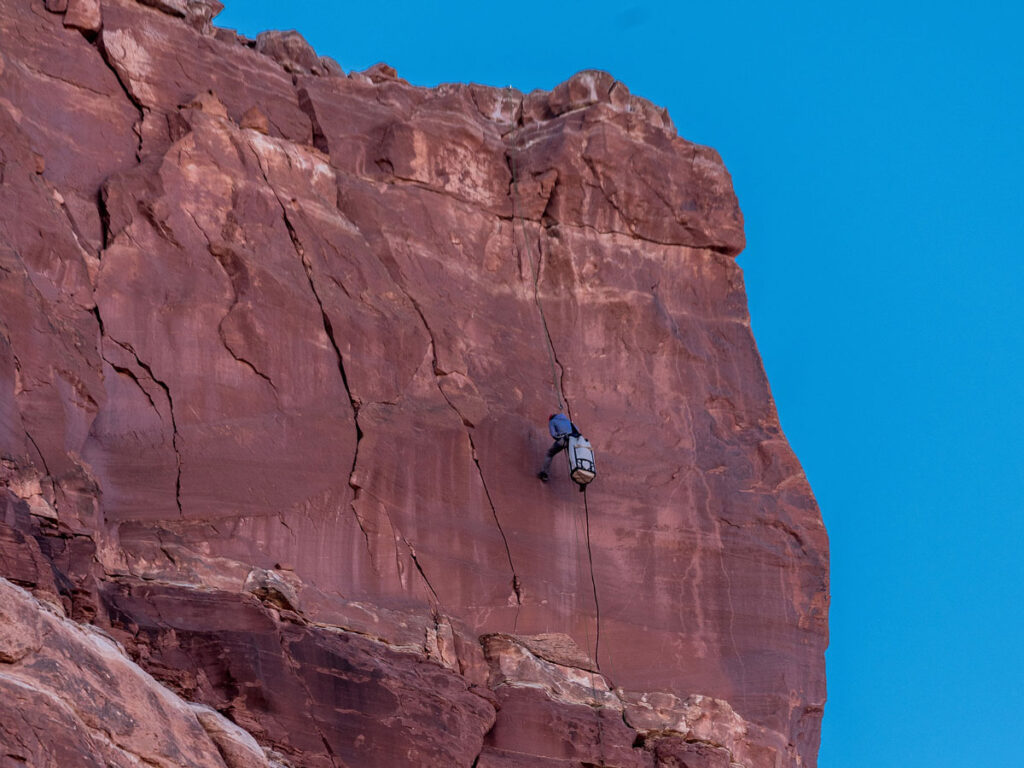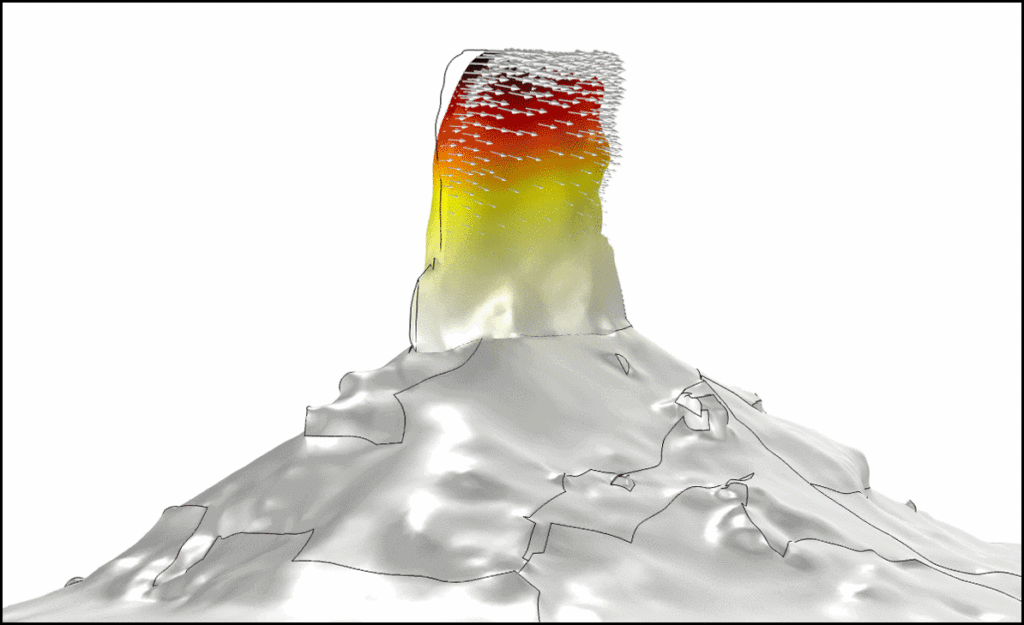It’s easy to think of Utah’s statuesque red rock towers as immobile, even immovable. Yet the rock towers imperceptibly twist, rock, and sway in response to vibrations and seismic activity.
Recently, University of Utah geophysics graduate student Riley Finnegan measured the ambient vibrations of 14 large-scale structures in southern Utah, then included these measurements in a new data set of 32 similar structures in Utah and beyond. The study was published in Seismological Research Letters.
“These data provide inputs for understanding how these landforms might respond to blasting work that’s done for building roads or other inputs for vibrational damage assessments or risks.”
“What [the researchers have] really done is to help us have confidence in our predictions about the specific frequencies at which these rock towers will resonate,” said Devin McPhillips, an earthquake geologist with the U.S. Geological Survey who was not involved with the study.
In addition to vibrational risk assessment, the rock towers have spiritual and cultural significance for the first occupants of these lands, including members of the Eastern Shoshone, Hopi, Navajo, Southern Paiute, Ute, and Zune tribes. “These are culturally valuable landforms,” Finnegan said. She hopes the data will be used not only to predict the impacts of natural disasters and human-caused vibrations but also to preserve the stunning structures.
“These data provide inputs for understanding how these landforms might respond to blasting work that’s done for building roads or other inputs for vibrational damage assessments or risks,” Finnegan said.
Rock Climbers Assist in Data Gathering
Prior research uncovered the impact of vibrations from helicopter flights on the Utah structures, and similar studies measured the natural frequency of mountains. Such measurements inform seismic risk assessments as well as risks from other types of vibrations. But gathering measurements is challenging.
“The individual data for each feature can be incredibly hard to obtain, usually involving technical climbing,” said Jeff Moore, a coauthor of the new study.

For the current study, scientists partnered with accomplished rock climbers led by coauthors Kathryn Vollinger and Jackson Bodtker, who followed established climbing routes up to 120 meters (~400 feet) high to place seismometers, which work like sophisticated accelerometers, atop the rock formations. Using photographs, drone footage, and seismometer data, researchers created 3D models of 10 of 14 rock formations they attempted, noting fundamental frequencies of 0.8–15 hertz, or cycles per second, which were inversely proportional to tower size. They were unable to model four towers because of camera exposure from bright sunlight and hard-to-measure rotational movements, like twisting.
“You can kind of think of a tower like a guitar string that’s turned on its side,” Finnegan said. “You play the guitar string, and it vibrates and resonates at certain frequencies, and we hear those frequencies.” Similarly, the towers vibrate at certain frequencies, though they can’t be heard in the field. Researchers created amplified audio recordings of the towers along with their 3D models.

Predictive Modeling with Seismic Potential
Along with measuring frequencies, mode shapes, and damping ratios (a measurement of the decrease in swaying motion over time) in the 14 structures, Finnegan and her team gathered frequency data and tower heights from prior studies and consulting reports for structures elsewhere in Utah, as well as in Arizona, France, and Israel. Combining the compiled data with their own measurements, researchers confirmed a formula for determining a structure’s fundamental frequency given its width, height, and composition. Using that relationship, researchers found they could roughly predict the natural frequency of unfamiliar sandstone or conglomerate rock structures.
Researchers hope this confirmation will help others predict the dynamic and resonance properties of other rock towers without challenging climbs; the calculation requires only width and height measurements that can be taken from the ground.
“If we know something about the composition of the feature and we know about its shape, we can make a pretty good guess about what the fundamental frequency will be,” McPhillips said. And such seemingly basic measurements can have wide-ranging implications, from refining earthquake hazard models to developing building codes in regions prone to seismic activity, like the Pacific Northwest. Such predictability becomes even more important when scientists like McPhillips are tasked with predicting outcomes in regions that have never recorded megathrust earthquakes.
“Extrapolating from the limited historic data we have is potentially dangerous,” McPhillips said. So data like Finnegan’s offer some added certainty and predictability. “If we know how old these rock towers are and we can estimate how much shaking they can sustain, we can put a maximum value on the strength of past shaking, and that’s really helpful for refining earthquake hazard models.”
—Robin Donovan (@RobinKD), Science Writer

